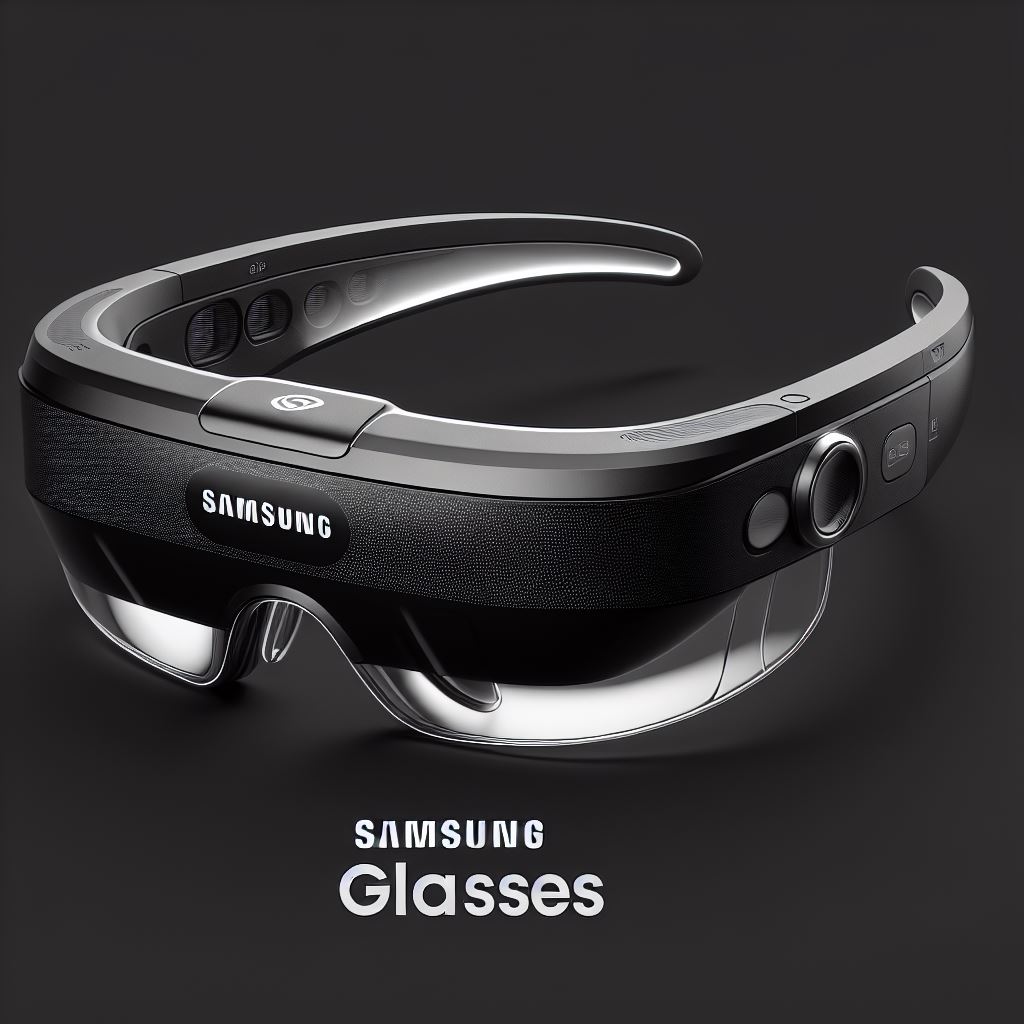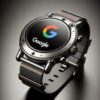Samsung’s AR Glasses (Expected 2025): A Mainstream Contender in Augmented Reality?
Samsung is poised to re-enter the augmented reality scene, and the anticipation is building. With an expected launch potentially around late 2024 or into 2025, these AR glasses aim to blend everyday wearability with smart, connected features. If you’re integrated into the Samsung Galaxy ecosystem or looking for a potentially more accessible entry into AR-enhanced experiences, Samsung’s upcoming offering is one to watch closely.
What Could Samsung’s AR Glasses Offer You?
Imagine getting notifications, quick translations, or navigation prompts subtly displayed in your field of view, all while keeping your phone in your pocket. Samsung’s goal appears to be creating AR glasses that are less about full-blown immersive realities and more about providing convenient, glanceable information and smart features in a comfortable form factor.
Expected Arrival & Price Point: What We Know (and Don’t)
- Launch Window: While official dates are yet to be announced, industry speculation points towards a reveal or launch sometime in late 2024 or more likely in 2025. Samsung has been discussing its extended reality (XR) plans, often in collaboration with Google and Qualcomm, suggesting a significant product is in development.
- Initial Availability: Some earlier rumors mentioned an initial production run of around 30,000 units for a device, but it’s unclear if this pertains to these specific AR glasses or a broader XR headset. More recent information suggests a cautious initial rollout.
- Pricing – The Big Question: This is where things get particularly interesting. Some early, unconfirmed reports floated a highly competitive price, possibly around $299 to $500. If this holds true, it would position Samsung’s glasses more directly against “smart glasses” like the Ray-Ban Meta rather than high-end AR devices like Apple’s Vision Pro or Meta’s advanced “Orion” project. However, other reports suggest a higher price for a more feature-rich device, potentially $800-$1000 or even higher if it’s a true mixed reality headset. Samsung’s strategy here will be crucial. For clarity, we’ll discuss possibilities for both lighter “smart AR glasses” and a more advanced “XR headset” as Samsung’s exact direction is still unfolding.
Design & Key Technical Aspects: What Might Be Inside?
- Lightweight Champion? One consistent rumor is a focus on a lightweight design, potentially as low as 50-100 grams for a glasses-style device. This would be key for all-day comfort. Color options would likely include classics like black and white, with other possibilities.
- The Engine:
- For lighter AR glasses: The Qualcomm Snapdragon AR1 Gen 1 Platform has been mentioned. This chip is designed for power-efficient smart glasses, enabling features like photo/video capture, basic notifications, and simple AR overlays.
- For a more advanced XR headset: Samsung would likely use a more powerful chipset, such as the Snapdragon XR2+ Gen 2 or a future iteration, developed in collaboration with Qualcomm and optimized for Google’s Android XR platform.
- Visuals & Display:
- Lighter AR: This might involve simpler projection technology, perhaps birdbath optics or basic waveguides with microLED or OLED displays, focusing on clarity for notifications and simple graphics rather than a wide, immersive field of view.
- Advanced XR: Would feature higher resolution displays (potentially OLEDoS – OLED on Silicon), a wider field of view (FoV), and advanced optics to support both AR passthrough and VR experiences.
- Camera: A built-in camera is expected. A 12MP sensor (like the Sony IMX681 mentioned in some reports)could allow for decent photo/video capture and enable vision-based AI features.
- Battery Life & Charging:
- Lighter AR: A smaller battery (e.g., the rumored 155mAh) would necessitate power efficiency and likely mean the glasses would be heavily reliant on a connected smartphone. Battery life might be a few hours of intermittent use.
- Advanced XR: Would require a significantly larger battery, possibly integrated into a rear head strap or an external pack, aiming for 2+ hours of continuous use.
- USB-C charging is almost a certainty.
- Connectivity: Bluetooth and Wi-Fi will be standard. The glasses will rely heavily on a paired Samsung Galaxy smartphone for processing power, connectivity, and app management, especially for lighter AR models.
Ecosystem & Intelligence: The Samsung & Google Edge
- Galaxy Integration: Expect seamless connectivity and feature integration if you’re already using Samsung phones, watches, and earbuds. This could include easy content sharing, unified notifications, and control via your Galaxy device.
- Powered by Android & Gemini AI: Samsung is collaborating with Google on an Android-based XR platform.This means potential access to Google services and AI capabilities, possibly through Google’s Gemini AI, for features like real-time translation, smart suggestions, and enhanced voice commands.
Why Consider Samsung’s AR Offering? Potential Benefits for You.
- Affordable Entry (Potentially): If the lower price rumors materialize for a “smart AR glasses” version, it could be a more accessible way to experience AR-like features.
- Comfort & Style: A lightweight, glasses-like design would be ideal for longer wear times and less social awkwardness.
- Seamless Galaxy Experience: For Samsung users, the tight integration with your existing devices is a strong plus.
- Google AI Smarts: The inclusion of Google’s AI could bring powerful and practical intelligent features.
- Practical Daily Assistance: Focus on notifications, quick info, and hands-free interaction for everyday tasks.
Human 2.0: These Wearables Will CHANGE Your DNA (and Your Life) in 2025
What to Keep in Mind: Potential Trade-offs
- “AR Lite” vs. “Full AR”: If priced lower, don’t expect the deeply immersive AR of high-end systems. The capabilities might be more akin to enhanced smart glasses. Clarify what level of AR you’re getting.
- Smartphone Dependence: Lighter models will almost certainly require a tethered (likely wireless) connection to a smartphone for most functionalities and processing.
- Battery Limitations: Especially in a lightweight design, battery life will be a key factor. Be prepared for regular charging.
- Ecosystem Focus: While likely compatible with other Android phones, the best experience will undoubtedly be with Samsung Galaxy devices.
- App Ecosystem Development: The success of any AR platform hinges on available apps and experiences. This will take time to build out.
- Initial Availability: New tech like this often launches in select markets first, and initial production runs might be limited.
How Might Samsung’s Glasses Compare? (As of May 2024, looking ahead to 2025)
- Ray-Ban Meta Smart Glasses: If Samsung releases a sub-$500 AR product, this is a key competitor. Both would offer stylish designs and camera/audio features. Samsung might differentiate with deeper Android/Google AI integration and potentially slightly more advanced AR visuals if they use a dedicated AR chipset like the AR1.
- Meta Quest 3 / Future Meta Quest Devices: These are primarily VR headsets with strong mixed-reality (passthrough AR) capabilities. If Samsung releases a more advanced XR headset (in the $500+ range), it would compete here, likely leveraging the Google Android XR platform.
- Apple Vision Pro: A premium device at a much higher price point, focused on “spatial computing” with very advanced AR/VR capabilities. Samsung is unlikely to compete directly at this tier initially but will aim for broader market adoption.
- XREAL Air Series / Other AR Viewers: These glasses often focus on providing a large virtual display for media consumption or productivity when connected to a phone or computer. Samsung’s offering might incorporate similar display features but with added onboard smarts and AI.
Potentially Unique Features for Samsung’s Offering:
While many features are speculative, Samsung could leverage its strengths in:
- Samsung Health Integration: Fitness tracking, guided workouts with AR overlays.
- SmartThings Integration: Control your smart home devices via AR interfaces.
- Enhanced DeX (Desktop Experience): Using AR glasses as a virtual monitor for a DeX-powered Galaxy phone.
- Advanced Camera Features: Leveraging Samsung’s mobile camera expertise for unique photo/video capabilities.
- Customizable Lenses: Options for prescription lenses would be crucial for broader appeal.
Bottom Line for Prospective Buyers (Looking towards 2025)
Samsung’s entry into the AR glasses market is significant.
- If they release a lightweight, more affordable “smart AR glasses” model (e.g., $300-$500): This could be an excellent choice for Samsung Galaxy users seeking a stylish, convenient way to get notifications, capture moments, and access AI-powered assistance without breaking the bank. It would be more about subtle enhancements than full AR immersion.
- If they release a more advanced “XR headset” (e.g., $800+): This would be a direct competitor in the growing mixed-reality space, appealing to those wanting richer AR and VR experiences, powered by the new Android XR platform.
Keep an eye out for official announcements from Samsung. The specifics of their product(s), especially regarding the exact nature of the AR experience, feature set, and final pricing, will determine its true value proposition for you. Their partnership with Google and Qualcomm suggests a serious and strategic approach to the XR market.



